Food
“From Trash to Treasure: Unpacking the Truth Behind Chinatown Hawker Leftovers Consumption”
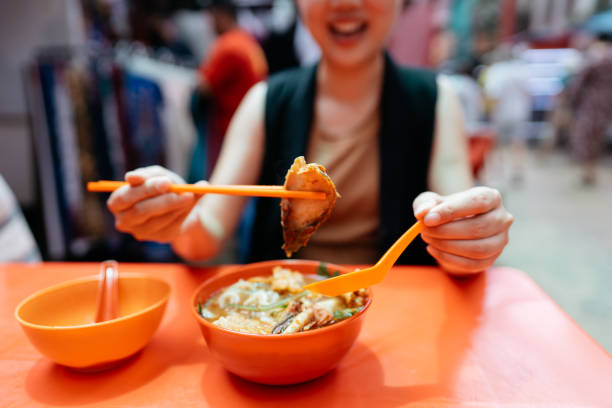
Introduction
It’s the end of the day. The scent of wok-fried noodles lingers in the air, mingling with that distinct tang of soy, spice, and something deeply nostalgic. In the bustling heart of Chinatown, hawker stalls begin winding down, shutters creaking, pots cooling, and customers trickling away. But the day isn’t over for everyone. As twilight falls, a curious and controversial practice begins to unfold—Chinatown hawker leftovers consumption.
This is not just about salvaging scraps or scraping the bottom of a bowl. It’s about people, culture, hunger, ethics, and sometimes, just plain survival. But what’s the real deal here? Is this a food safety nightmare or a silent protest against waste? Hang tight, because we’re about to dive into a world where every leftover has a story.
The Buzz Behind Chinatown Hawker Leftovers Consumption
A Scene Hidden in Plain Sight
Anyone who’s ever visited a hawker center in a Chinatown district—be it Singapore, Kuala Lumpur, or Hong Kong—knows it’s a sensory overload. Sizzling sounds, the clatter of chopsticks, vibrant sauces being ladled into plastic containers. But not everyone is there to buy fresh meals.
Come closing time, some individuals, often quietly and discreetly, begin collecting what’s been left behind—unfinished bowls of rice, half-eaten roast meats, and even tossed-out dumplings. This leftovers consumption isn’t always as shocking as it sounds. In fact, there are distinct categories of it:
-
Scavengers or “bin-hunters” who collect discarded food purely for survival.
-
Sustainability activists retrieving edible items to prevent waste.
-
Informal workers or cleaners who take home untouched portions left on trays.
-
Resellers who—controversially—repurpose leftovers for the next day.
It’s a practice that many have seen but few dare to talk about. Until now.
Digging Into the Roots: Why Does This Happen?
1. Food Waste Is Out of Control
According to various environmental reports, millions of tons of food are discarded annually in Asia alone. Hawker centers, serving hundreds if not thousands daily, contribute to this overflow.
Chinatown hawker stalls, known for their generous portions, often toss what’s not sold or half-consumed. For some, it’s heartbreaking. For others? It’s opportunity knocking.
2. Poverty Still Lurks Beneath the Glitz
Chinatown may seem lively and colorful, but behind the red lanterns and dragon murals lies another reality. Many elderly citizens and low-income migrants live nearby, scraping by on limited means.
To them, leftover char kway teow or fried rice isn’t disgusting—it’s dinner.
3. Cultural Norms and Taboos Are Shifting
There’s an unspoken understanding in some communities that wasting food is sinful. In Buddhist or Confucian-leaning cultures, the concept of frugality is deeply ingrained. For some, leftovers consumption isn’t just acceptable—it’s honorable.
Who’s Eating the Leftovers?
The profiles might surprise you.
The Elderly Recycler
Meet Mr. Tan, a 75-year-old former tailor who now survives on a meager pension. Every evening, he wheels a small cart to the Chinatown food court. He’s not begging—just looking for what’s still good.
“If the food’s not touched, why throw it?” he asks, lifting a spotless box of fried noodles someone left behind.
The Sustainability Blogger
Then there’s Lila, a 28-year-old eco-blogger who documents edible food waste. Her mission? To show how much perfectly good food ends up in the bin.
“It’s not about eating trash,” she insists. “It’s about changing mindsets.”
She’s filmed dozens of “leftover hauls,” some with shocking results: whole trays of satay sticks, untouched soups, even boxed sushi.
The Shadow Reseller
This one gets dicey. Rumors persist of certain hawkers or side vendors quietly repackaging day-old, untouched food—especially fried items like spring rolls or fritters—and reselling them the next day at a discount. Authorities frown on it, but enforcement is tough unless caught red-handed.
Ethics, Hygiene, and the Gray Zones
Let’s talk turkey—or in this case, maybe that half-eaten soy chicken leg.
Is It Safe?
In a word: sometimes.
-
Steamed or boiled food tends to retain safety longer than dairy- or meat-based items.
-
Time and temperature are crucial—food left out too long becomes a breeding ground for bacteria.
-
Visible cleanliness can be deceiving.
So while scavenging clean trays may offer a meal, rummaging through mixed bins? That’s a gamble.
Is It Ethical?
The answer depends on whom you ask:
-
Yes, say anti-waste advocates—better eaten than wasted.
-
No, argue public health officials—what’s thrown out is thrown out for a reason.
-
Maybe, admit most hawkers—some look the other way, others discourage the practice outright.
The Hawker’s Dilemma
Hawkers themselves are often caught in a bind. They’re businesspeople, sure, but many are part of close-knit communities.
Some hawkers quietly set aside untouched portions for familiar faces—an old aunty, a struggling student, a migrant cleaner. Others post signs: NO TAKING LEFTOVERS.
It’s a matter of liability, hygiene, and personal ethics. But more than a few will admit—they hate seeing good food go to waste.
The Laws of the Land
Singapore:
Strict hygiene laws mean food past a certain hour must be disposed of. Giving it away unofficially can invite legal trouble.
Malaysia:
Looser rules, but enforcement depends on local councils. Informal giveaways are more common.
Hong Kong:
Food waste remains a hot-button issue, but grassroots groups are pushing for formal donation systems and redistribution laws.
In all locations, the practice of Chinatown hawker leftovers consumption exists in a murky legal twilight—neither openly condoned nor fully condemned.
Cultural Shifts: Toward a Zero-Waste Future?
Amid the rising interest in sustainability, leftover consumption is being rebranded—not as desperation, but as eco-awareness.
Initiatives on the Rise:
-
Food rescue apps like OLIO or Too Good To Go.
-
“Pay-as-you-feel” cafés sourcing surplus food.
-
Community fridges in residential Chinatown zones, offering free leftover portions.
Could the practice once deemed shameful become a badge of environmental pride?
Chinatown Hawker Leftovers Consumption: Busting the Myths
FAQ
Q: Are people really eating out of the trash?
A: Not always. Many target untouched, discarded meals still in containers.
Q: Is it mostly homeless people doing this?
A: No. The group ranges from elderly poor to eco-conscious youth and even middle-class activists.
Q: Is this legal?
A: It’s not usually illegal to take leftovers, but reselling them or violating food safety laws can lead to fines or worse.
Q: What are the risks?
A: Food poisoning, reputational harm (for hawkers), and public health concerns.
Q: Is there a better solution?
A: Structured redistribution systems, formal donations, or apps connecting hawkers to those in need can bridge the gap safely.
So…What Now?
We’ve peeled back the curtain on a practice that, while hidden in plain sight, says a lot about our societies. Chinatown hawker leftovers consumption isn’t just about food. It’s about:
-
The chasm between abundance and need.
-
The quiet resilience of the marginalized.
-
The growing hunger for sustainability in modern cities.
It raises big questions: Should we criminalize those trying to survive off food waste? Or should we restructure our systems to better distribute surplus?
Conclusion: A Table Half Full?
Whether you see it as a crisis or a cause, the story of Chinatown hawker leftovers consumption is more than just leftovers on a plate. It’s a reminder that every bite matters—not just for your stomach, but for your conscience, your neighbor, and your planet.
We can’t stop the end of day from coming, but maybe, just maybe, we can stop good food from going to waste.
So next time you’re in Chinatown and leave a bit of rice behind, ask yourself: Where will it go?
Food
Levapioli Unveiled: The Secret Ingredient to Sparking Creativity and Innovation
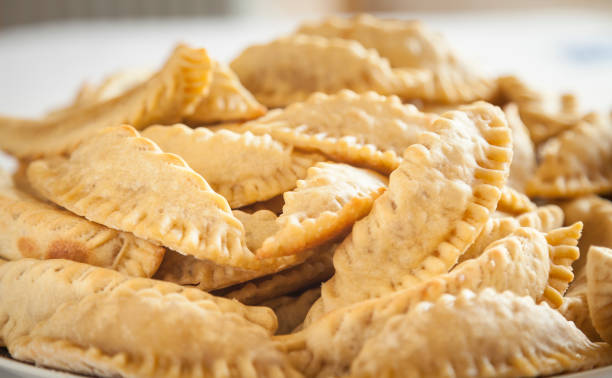
Introduction
Ever stumbled upon a word so intriguing that you just had to dig deeper? That’s exactly what happened when I first heard about Levapioli. It’s this curious, almost mystical term that’s been buzzing around creative circles lately — and if you haven’t heard of it yet, you’re in for a treat!
Levapioli is not just a fancy word. It’s an idea, a mindset, and a method wrapped into one, designed to ignite creativity, boost problem-solving skills, and help people think outside the box like never before. Whether you’re an artist, entrepreneur, student, or just someone who loves a good brain teaser, might just be the spark you didn’t know you needed.
So, buckle up! Let’s unravel what Levapioli really means, why it’s catching fire, and how you can make it work for you. Ready? Let’s dive in!
What on Earth is Levapioli?
The thing about is that it’s a bit of a puzzle wrapped in an enigma. Originating from a blend of ancient creative philosophies and modern psychology, Levapioli has evolved into a dynamic approach to thinking and doing.
At its core, Levapioli encourages:
-
Curiosity over judgment — ask questions, explore wild ideas.
-
Playfulness in problem-solving — let your mind wander and experiment.
-
Connection of unrelated concepts — find patterns where others see chaos.
Sounds pretty cool, right? But how does it actually work?
The Levapioli Framework: How to Use It
If you’re wondering how to get started, don’t sweat it. is surprisingly straightforward once you break it down into manageable steps.
Step 1: Open the Door to Curiosity
Before any great idea comes to life, curiosity has to take the wheel. Levapioli thrives on “why” and “what if” questions. So, don’t hold back — ask the weirdest, wildest questions possible.
Step 2: Embrace the Weird and Wonderful
Levapioli encourages you to jump into the unknown without fear of messing up. Think of it like a playground for your brain, where mistakes are just stepping stones.
Step 3: Mix and Match Ideas
Here’s where the magic happens. Take two completely unrelated ideas and mash them together. For example, what if a smartphone functioned like a plant? Sounds crazy, but this mental experiment could spark innovation.
Step 4: Reflect and Refine
Not every idea will be a winner, and that’s okay. Levapioli teaches patience—refine the best ideas, discard what doesn’t fit, and keep your mind flexible.
Why Is Levapioli Catching On?
In today’s fast-paced world, we’re drowning in information and options. Traditional thinking patterns just don’t cut it anymore — they’re like trying to fit a square peg in a round hole. Enter : a fresh approach to creativity that fits the chaotic modern landscape perfectly.
Benefits of Using Levapioli
-
Boosts innovative thinking: Encourages new connections and ideas.
-
Reduces fear of failure: Normalizes experimentation and “trial and error.”
-
Enhances problem-solving: Makes tough problems more approachable.
-
Improves mental flexibility: Trains your brain to adapt quickly.
With so many perks, it’s no wonder that entrepreneurs, educators, and creatives are jumping on the Levapioli bandwagon.
Levapioli in Real Life: Examples You Can Relate To
You might be thinking, “All this sounds great, but how does it actually apply to me?” Great question! isn’t just theoretical fluff; it has practical uses in everyday life.
1. In the Workplace
Say your team is stuck on a marketing campaign. Instead of grinding away at traditional strategies, use Levapioli to brainstorm off-the-wall concepts — like marketing through virtual reality or using humor in unexpected ways.
2. At School
Students can use Levapioli to tackle complex subjects by linking ideas from different fields — history with tech, art with math — to create unique projects that stand out.
3. Personal Projects
Trying to reinvent your hobby or start a side hustle? Apply by mixing interests you never thought would connect — say, cooking and graphic design — and see where it takes you.
Top Tips to Master Levapioli Like a Pro
If you want to get the most out of , here are some handy tips:
-
Keep a “Levapioli Journal” — jot down random ideas and questions daily.
-
Collaborate with diverse people — fresh perspectives boost creativity.
-
Set aside “playtime” for your brain — take breaks to daydream or doodle.
-
Don’t self-edit too early — let ideas flow freely before judging.
-
Try “idea mashups” regularly — pick two random things and combine them.
FAQs About Levapioli
Q: Is Levapioli a proven method?
A: While is a modern take on creativity that borrows from established psychological principles, it’s mostly experimental. That said, many who practice it report improved creative output.
Q: Can Levapioli help with mental blocks?
A: Absolutely! By pushing you to think unconventionally, Levapioli can bust through those frustrating blocks and get your ideas flowing again.
Q: Is Levapioli only for creative professionals?
A: Nope! Anyone can use —students, teachers, business folks, or even stay-at-home parents.
Q: How long does it take to see results?
A: Results vary, but with consistent practice, many start noticing more fluid and innovative thinking within weeks.
Wrapping It Up: Why Levapioli Might Just Change Your Life
So, what’s the final word on Levapioli? If you’re craving a fresh way to unlock creativity, tackle problems, or simply spice up your thinking, this quirky concept is worth exploring. It reminds us that creativity isn’t about rigid formulas but about curiosity, play, and mixing things up.
Why stick to the same old thinking patterns when offers a fun, flexible alternative? Go ahead — ask a weird question, try a wild idea, and see where Levapioli takes you. You might just surprise yourself!
Food
Unlocking the Mystery of Pizmotidxizvou: The Digital Key to Tomorrow’s Imagination
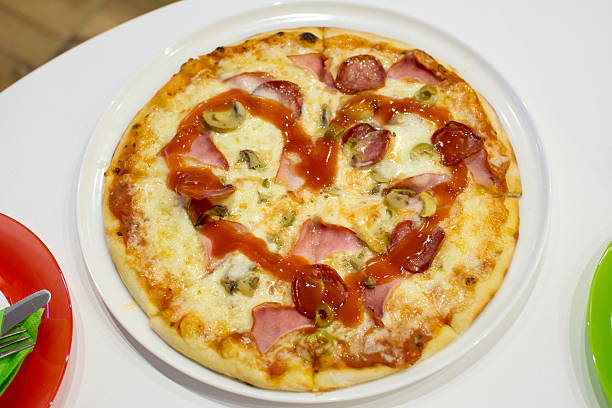
Let’s cut to the chase—pizmotidxizvou isn’t your average everyday word. In fact, if you tried tossing it into a casual conversation at your local coffee shop, you’d probably get more raised eyebrows than responses. But that’s exactly the point. This quirky, complex-sounding term is a conceptual portal to something far more intriguing than its odd spelling lets on. It’s about uncharted ideas, future-forward thinking, and unleashing the kind of creativity that doesn’t just think outside the box—it redesigns the box altogether.
Whether pizmotidxizvou is a state of mind, a philosophy, or a symbolic construct is up for debate. What’s not up for debate? It’s making waves in digital culture, storytelling, and speculative innovation.
So, buckle up as we explore the what, the why, and the wild possibilities of pizmotidxizvou.
The Origins of Pizmotidxizvou: A Word from Nowhere
Linguistic Mash-Up or Brilliant Coinage?
You’re probably wondering: Where the heck did pizmotidxizvou come from? Great question. While there’s no definitive root in any known language (at least not in any traditional lexicon), many believe pizmotidxizvou is a coined neologism—crafted to embody the essence of undefined potential.
Like all good imaginative words, it rolls off the tongue with just enough difficulty to sound otherworldly, yet familiar enough to feel significant. Its mysterious nature might even remind you of words like “serendipity” or “quixotic”—terms that carry emotional weight, even if their meanings aren’t immediately obvious.
A Word Born in the Digital Petri Dish
Speculation abounds that pizmotidxizvou first gained traction in niche online forums, coding communities, or experimental fiction labs where language is bent, twisted, and transformed into tools of artistic expression. From there, it leapt into underground creative circles, hashtag threads, and indie game developer logs.
Sound far-fetched? Maybe. But then again, so did the idea of emojis replacing words… and look where we are now.
Decoding Pizmotidxizvou: What Could It Mean?
Here’s where things get juicy.
While there’s no one-size-fits-all definition (and maybe that’s the magic), here are a few interpretations floating around the imaginative web:
1. A Conceptual Framework for Limitless Thinking
Some see pizmotidxizvou as a mindset—a way of looking at the world without boundaries. Think of it like a mental sandbox where the usual rules of logic, physics, and tradition don’t apply. Want to build a staircase made of light? Go ahead. In the realm of pizmotidxizvou, creativity is law.
2. A Digital Artifact or Key
Others view it as a kind of digital talisman—a file, code, or algorithm holding the power to unlock something bigger. It might be a puzzle piece in an ARG (Alternate Reality Game), or a cipher in a futuristic narrative. In sci-fi lingo, it could very well be the equivalent of the “One Ring,” but for AI-powered societies.
3. A Symbol of Rebellion Against Predictability
In a world obsessed with structure, schedules, and standardized everything, pizmotidxizvou symbolizes glorious chaos. It’s a protest against the mundane. It’s the neon-colored paint splattered across a spreadsheet. It’s your imagination flipping the bird to convention.
The Many Faces of Pizmotidxizvou: Applications in Fiction, Tech & Art
In Storytelling: The Narrative Chameleon
Authors and game writers have started dropping pizmotidxizvou into their speculative universes—not just as a quirky word, but as a fully-realized force. In some stories, it’s an ancient code hidden in quantum servers. In others, it’s a rogue sentient idea trying to escape deletion.
Examples of narrative use:
-
A novella where pizmotidxizvou is a spoken command to warp time.
-
An indie game where unlocking the pizmotidxizvou Protocol reveals a parallel reality.
-
A comic series where pizmotidxizvou is a myth told by AI to sentient bots.
In Tech: The Placeholder for Unbuilt Tools
Developers, especially those neck-deep in experimental fields like quantum computing or neural net design, occasionally use placeholder terms when theorizing about tools that don’t exist yet. In this imaginative space, pizmotidxizvou becomes a linguistic stand-in for “that thing we haven’t invented—but totally will.”
In Art: The Muse Without a Face
Digital artists have embraced the concept as a theme, building 3D renderings, soundscapes, and immersive installations titled pizmotidxizvou. Because it lacks hard definition, it invites interpretation. A blank canvas rarely sparks such precise chaos.
How Can You Embrace the Pizmotidxizvou Mindset?
Feeling inspired? Good. Here’s how to channel your inner pizmotidxizvou:
1. Question Everything
If something’s always been done a certain way, challenge it. Ask: What if I did the opposite? What if this rule doesn’t apply in my world?
2. Create with No Destination in Mind
Let your creativity wander. Write a story that ends in the middle. Paint a skyline from a dream you don’t remember. Build a digital sculpture made of sound loops.
3. Invent Words
Why stick to the dictionary? Build your own lexicon. Words are just sounds we agree on. Make your own pizmotidxizvous.
4. Let Nonsense Lead to Sense
Begin with chaos. Trust that patterns, meaning, or emotional truth will eventually form. Or don’t. That’s the pizmotidxizvou way.
The Culture Behind the Concept: Pizmotidxizvou as Social Commentary
A Mirror to Modern Existentialism?
Some cultural theorists suggest that pizmotidxizvou echoes today’s existential uncertainty. In a time when AI blurs creativity, information overwhelms cognition, and authenticity is hard to find—pizmotidxizvou steps in as a symbolic response.
It says: “Reality might be a mess, but imagination? That’s still mine.”
The Playful Rebellion
It also represents a kind of whimsical protest. Instead of marching with placards, plants question marks in your mind. It nudges you to break routines, speak nonsense, doodle in meetings, and find clarity in chaos.
FAQ: Everything You Didn’t Know You Needed to Ask About Pizmotidxizvou
Q1: Is pizmotidxizvou a real word?
Nope—at least not in traditional dictionaries. But its conceptual weight is gaining traction in creative circles.
Q2: How do you pronounce pizmotidxizvou?
However you want! But some lean toward: piz-moh-tid-zix-voo. Try saying it fast—feels like a magical chant, doesn’t it?
Q3: Can pizmotidxizvou be used in professional settings?
Depends on your workplace vibe. Tech startups and design firms might embrace it. Accounting firms? Maybe hold off for now.
Q4: Is there a symbol or logo for pizmotidxizvou?
Not officially. But artists have begun crafting abstract symbols that feel aligned—spirals, infinity knots, and glitchy neon sigils.
Q5: Can I make my own definition of pizmotidxizvou?
Absolutely! In fact, that’s kinda the whole point.
Conclusion: The Infinite Playground of Pizmotidxizvou
When all is said and done, pizmotidxizvou isn’t about getting it “right.” It’s about permission—the green light to imagine wildly, build recklessly, and think divergently.
In a world that often rewards uniformity, pizmotidxizvou dares you to color outside the lines… and maybe even draw entirely new ones. Whether it’s a futuristic password, a story seed, or a philosophical compass, it exists in the delicious intersection between sense and nonsense.
So next time someone asks what you’re working on, flash a smile and say, “Oh, just refining my pizmotidxizvou.”
They may not know what it means—but soon, they’ll wish they did.
Food
Trurimesu Exposed: 17 Shocking Facts You Didn’t Know About This Viral Sensation

In the vast world of internet trends and viral food creations, one name has been making waves recently: Trurimesu. From short videos and influencer shout-outs to unexpected appearances in cafes around the globe, Trurimesu is stirring curiosity and excitement. But what exactly is it?
Whether it’s a fresh twist on a classic dessert, a new brand, or a culinary invention that’s taken the internet by storm, Trurimesu has people talking—and for good reason.
Let’s explore this mysterious trend in detail, from its roots to how you can make your own.
The Mysterious Origins of Trurimesu
Historical Roots
While the exact origin of Trurimesu is still debated, some believe it evolved as a modern reinterpretation of tiramisu, a traditional Italian dessert. The name might be a playful spin on the original, or perhaps it’s an entirely new creation with its own backstory.
Cultural Context
Trurimesu might also be influenced by cross-cultural experimentation in modern cuisine. It’s not uncommon for trends to emerge from fusion dishes that blend East and West, or traditional with modern. Trurimesu fits that narrative perfectly.
How It Gained Online Traction
The term “Trurimesu” started popping up in hashtags and food blogs in early 2024. Viral TikToks, captivating Instagram Reels, and mouthwatering YouTube shorts helped fuel the fire. People were intrigued not just by the taste, but also by the story.
The Rise of Trurimesu in Pop Culture
Viral Social Media Campaigns
Food bloggers and influencers turned Trurimesu into a trending topic. Recipes, reviews, and challenges spread across platforms, racking up millions of views.
Celebrity Endorsements
A few celebrities mentioned Trurimesu in interviews or showcased it in their social media feeds, causing a snowball effect in public interest.
Internet Memes and Reactions
From jokes about the name to creative memes comparing Trurimesu with tiramisu, humor played a key role in its viral success.
Ingredients and Components of Trurimesu
Key Ingredients
Though variations exist, most versions include:
-
Coffee-soaked sponge or biscuit base
-
Creamy mascarpone-style layer
-
Cocoa powder or custom toppings (like matcha, strawberry, or gold flakes)
Nutritional Value
The calorie content can vary, especially with added sugar or toppings. However, with natural ingredients and mindful portions, it can be a moderately indulgent treat.
Variations Around the World
Some cultures are now adapting Trurimesu using local ingredients—think green tea versions in Japan, coconut milk renditions in Southeast Asia, and even chili-chocolate combos in Latin America.
How Trurimesu is Made
Traditional Preparation Steps
-
Brew strong espresso or coffee.
-
Dip sponge fingers or cake slices in the coffee.
-
Layer with whipped cream and a cheese-based mix.
-
Dust with cocoa or topping of choice.
-
Refrigerate for at least 4 hours for best results.
Modern Twists and Shortcuts
Ready-mix kits, microwaveable versions, or single-serve jars have made Trurimesu accessible to all.
Trurimesu vs. Similar Concepts
Comparison with Tiramisu
-
Tiramisu: Rich in tradition, uses mascarpone, raw eggs, and alcohol.
-
Trurimesu: Often egg-free, playful with ingredients, more visual appeal.
Other Desserts It Resembles
It’s been compared to icebox cakes, trifles, and even parfaits, thanks to its layered structure.
Trurimesu’s Health Impact
Is It Healthy or Not?
In moderation, can be part of a balanced diet. Versions using natural sweeteners, low-fat cream, or plant-based options make it healthier.
Potential Allergies
Dairy, gluten, and caffeine are common allergens. Always check the label or recipe.
Diet-Friendly Versions
Many vegan, keto, and low-carb recipes are now circulating online.
The Economic Impact of Trurimesu
Market Demand and Trends
Searches for on platforms like Pinterest and Google Trends have surged, reflecting real consumer interest.
Impact on Small Businesses
Local bakeries and home-based chefs are cashing in on the trend, offering on their menus or as special orders.
Export and Trade Influence
Countries with popular dessert exports, like Italy and France, have started to explore as a market niche.
Psychological Appeal of Trurimesu
Why People Are Obsessed
Visual appeal, nostalgic flavors, and the novelty factor make it irresistible.
Sensory Triggers
Creamy textures, bold coffee notes, and soft sponge layers hit all the right notes.
FOMO and Novelty Factors
Limited editions and viral hype drive curiosity—no one wants to miss the next big thing.
The Role of Influencers in Spreading Trurimesu
TikTok and Instagram Trends
Social media platforms, especially TikTok and Instagram, played a major role in meteoric rise. Creators began uploading short, aesthetic recipe videos showcasing different versions of —layered in jars, frozen like popsicles, or served with edible glitter. Hashtags like #and #TrurimesuRecipe quickly went viral, drawing millions of views.
Influencer Recipes and Reviews
Popular food influencers gave glowing reviews, often labeling it a “must-try” or “next-gen tiramisu.” Some even launched limited-edition versions in collaboration with local cafes or food brands, giving it more credibility and mainstream appeal.
Trurimesu and the Food Industry
Adoption in Cafes and Bakeries
From New York to Seoul, bakeries are jumping on the trend. It’s appearing in menus under “Modern Italian Fusion” or as part of limited-time dessert samplers.
Commercial Product Lines
Ready-to-eat Trurimesu is now a supermarket item. Both premium and budget brands have begun offering it in cups, frozen packs, and even as DIY kits.
Packaging and Branding Strategies
Bright colors, minimalist labels, and eco-friendly packaging help Trurimesu stand out. Some companies even print QR codes on packaging linking to social media videos or recipe tutorials.
Consumer Reviews and Testimonials
What People Are Saying
Customers praise for being “light yet indulgent” and “perfect for coffee lovers.” Its customizable nature—allowing you to adjust sweetness, texture, and flavor—earns it major points.
Global Reception
-
USA & Canada: Popular among foodies and Gen Z.
-
Asia: Japan and Korea have embraced as a trendy café dessert.
-
Europe: Met with mixed reviews, especially from tiramisu purists.
Favorite Styles and Toppings
Common fan favorites include:
-
Matcha Trurimesu
-
Strawberry Cream Trurimesu
-
Mocha Crunch Trurimesu
How to Make Your Own at Home
Simple Home Recipe
Ingredients:
-
1 cup espresso or strong coffee
-
10 ladyfingers or sponge biscuits
-
1 cup whipped cream or coconut cream
-
1 cup mascarpone or cream cheese
-
1 tsp vanilla extract
-
Cocoa powder or toppings of choice
Instructions:
-
Dip biscuits in coffee briefly.
-
Line the base of your dish or jar.
-
Mix cream, cheese, and vanilla until smooth.
-
Layer cream mixture over biscuits.
-
Repeat layers, finish with toppings.
-
Chill for 4–6 hours.
Tips for First-Timers
-
Don’t oversoak the biscuits—they’ll get mushy.
-
Use a piping bag for clean cream layers.
-
Let it sit overnight for richer flavor.
Mistakes to Avoid
-
Using warm cream or cheese (won’t set properly).
-
Skipping refrigeration.
-
Overloading with sugar or toppings.
Unusual Variants You Need to Try
Vegan and Gluten-Free Options
-
Replace cream with whipped coconut cream.
-
Use gluten-free biscuits or sponge cake.
-
Opt for almond or oat milk-soaked layers.
Matcha, Fruit, or Spicy Twists
-
Matcha: Replace cocoa with green tea powder.
-
Berry Blast: Use strawberry puree between layers.
-
Spicy Chocolate: Add a pinch of chili powder to the cream layer for a kick!
Myths and Misconceptions about Trurimesu
Debunking Common Myths
-
“It’s just tiramisu misspelled”: While inspired by tiramisu, Trurimesu stands on its own as a reinvented concept.
-
“You can’t make it at home”: On the contrary, home chefs are among its biggest creators.
Origins of False Info
Many myths come from early viral posts or memes. As the dessert gained fame, people assumed or repeated misinformation. Thankfully, creators now share accurate recipes and facts.
Trurimesu in Media and Entertainment
Appearances in TV and Film
A fictional -inspired dessert recently appeared on a popular cooking show, solidifying its place in pop food culture.
How It Shapes Pop Perception
Trurimesu has become a symbol of how modern cuisine can blend nostalgia with innovation, tradition with playfulness.
Future Trends: What’s Next for Trurimesu?
Predicted Innovations
-
DIY vending machines
-
Seasonal flavors (pumpkin spice, peppermint)
-
Trurimesu ice cream sandwiches and cakes
Long-Term Viability
With its adaptability and viral appeal, Trurimesu is likely more than just a trend—it may become a menu mainstay like cronuts or bubble tea.
FAQs About Trurimesu
Q1: Is Trurimesu the same as tiramisu?
No, it’s inspired by tiramisu but features variations in ingredients, style, and presentation.
Q2: Where can I buy ?
Many boutique bakeries, dessert shops, and even some supermarkets now carry it.
Q3: Is Trurimesu vegan-friendly?
It can be! Use plant-based cream, cheese alternatives, and gluten-free biscuits.
Q4: How long does Trurimesu last in the fridge?
Usually up to 3–4 days when stored in an airtight container.
Q5: Can I freeze Trurimesu?
Yes, but the texture may change. Best enjoyed fresh or refrigerated.
Q6: Is just a social media trend?
While it started online, its growing popularity suggests it has staying power.
Conclusion: Why is More Than Just a Trend
Trurimesu isn’t just a fleeting food fad—it’s a cultural moment. It represents how digital culture, culinary creativity, and consumer curiosity collide to create something new, exciting, and surprisingly delicious.
Whether you’re tasting it for the first time or crafting your own version at home, Trurimesu is an experience—rich, layered, and unforgettable.
-
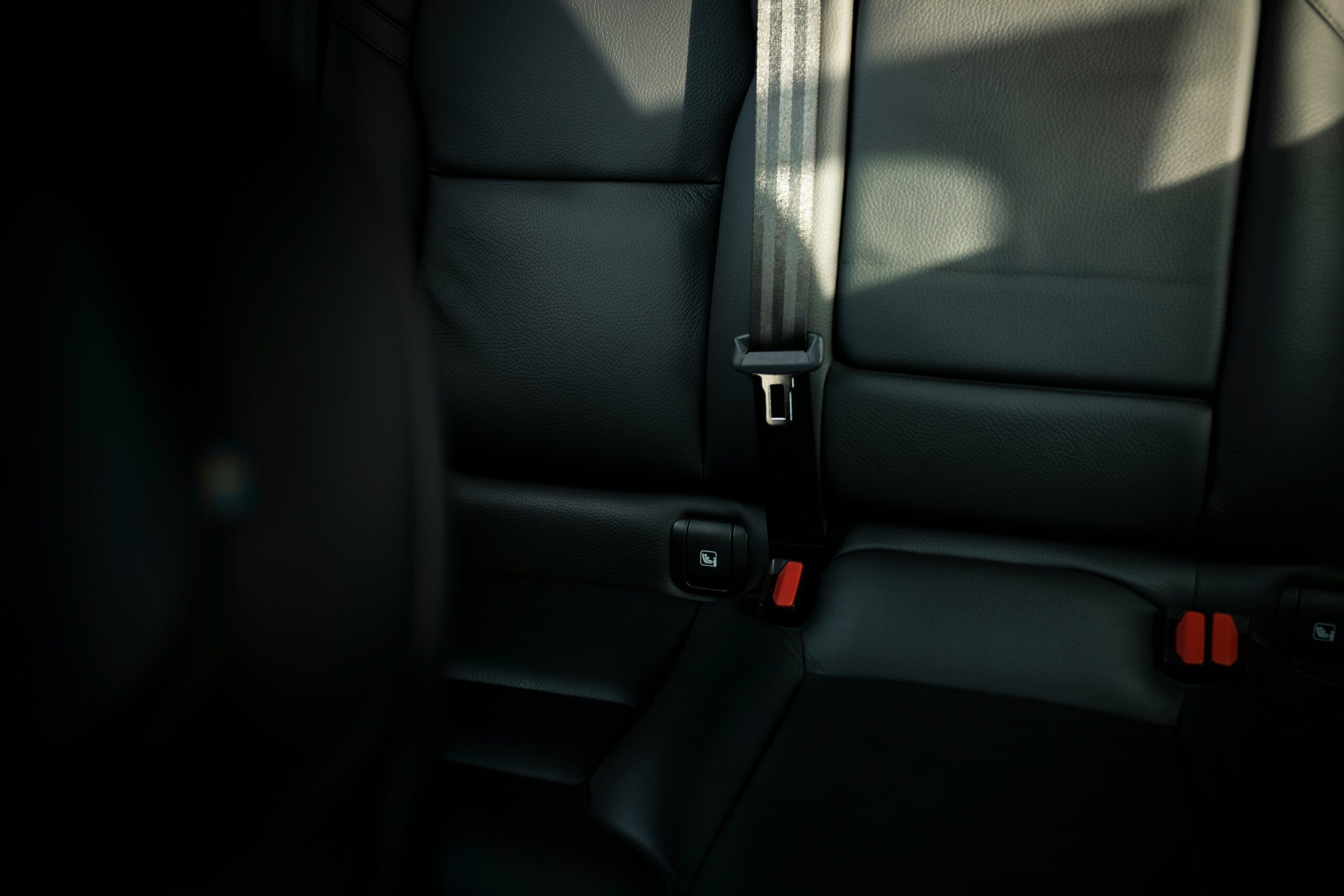
 Lifestyle5 months ago
Lifestyle5 months agoEnhancing Online Safety: The Benefits of Using Bold2fa
-

 Lifestyle1 month ago
Lifestyle1 month ago“Livpure Colibrim: A Whirlwind Romance Between Water and Wonder”
-

 News4 months ago
News4 months agoSteven Maranga Nyambega: A Visionary Leader Shaping the Future
-

 Fashion2 months ago
Fashion2 months agoUnlocking the Magic of Styleinventure com: Where Trend Meets Transformation
-

 Lifestyle1 month ago
Lifestyle1 month agoMystery on Wheels: The Curious Case of 鲁q 669fd
-

 Lifestyle1 month ago
Lifestyle1 month agoThe Ultimate Guide on How to Apply xemiwikhiz5654 Like a Pro
-
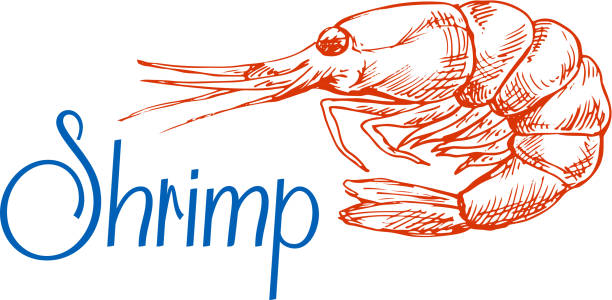
 Lifestyle1 month ago
Lifestyle1 month agoUnlocking the Mystery of Chscampamp.org: Your Ultimate Guide to the Hidden Gem Online
-

 News2 months ago
News2 months ago“The Unseen Spark: How Annie Gee Veeva Is Quietly Redefining the Digital Era”
